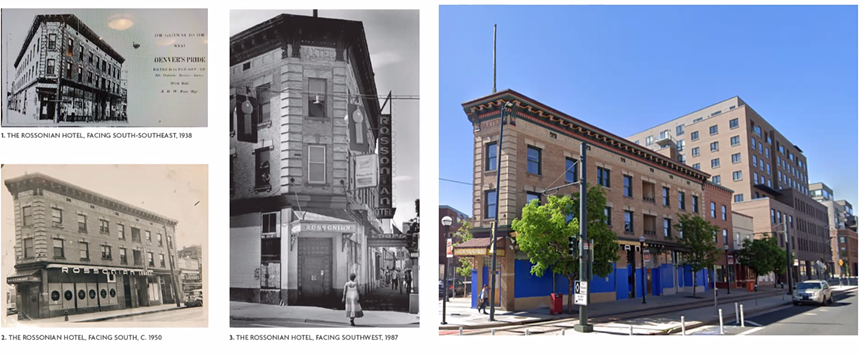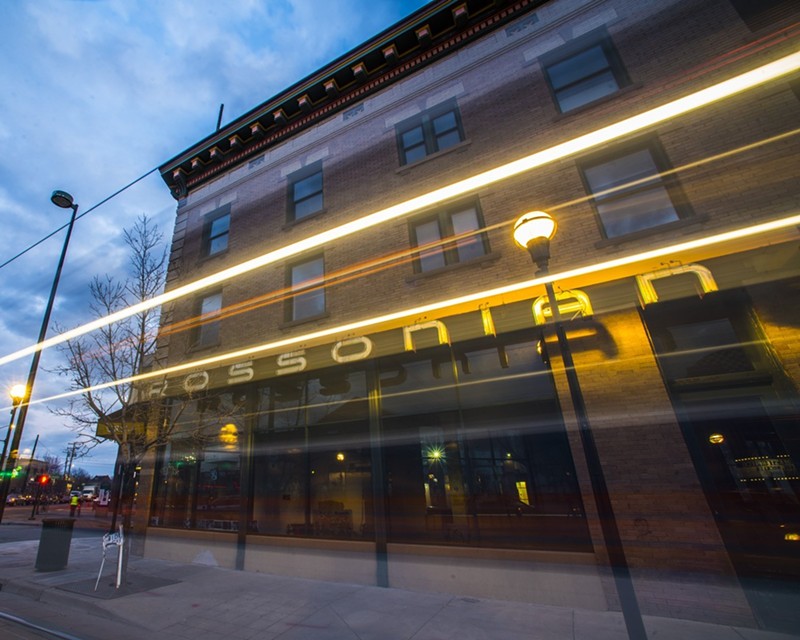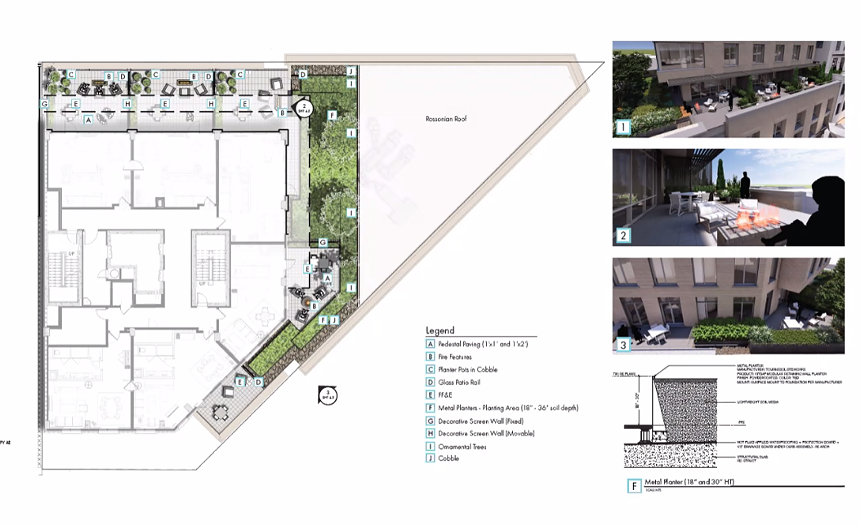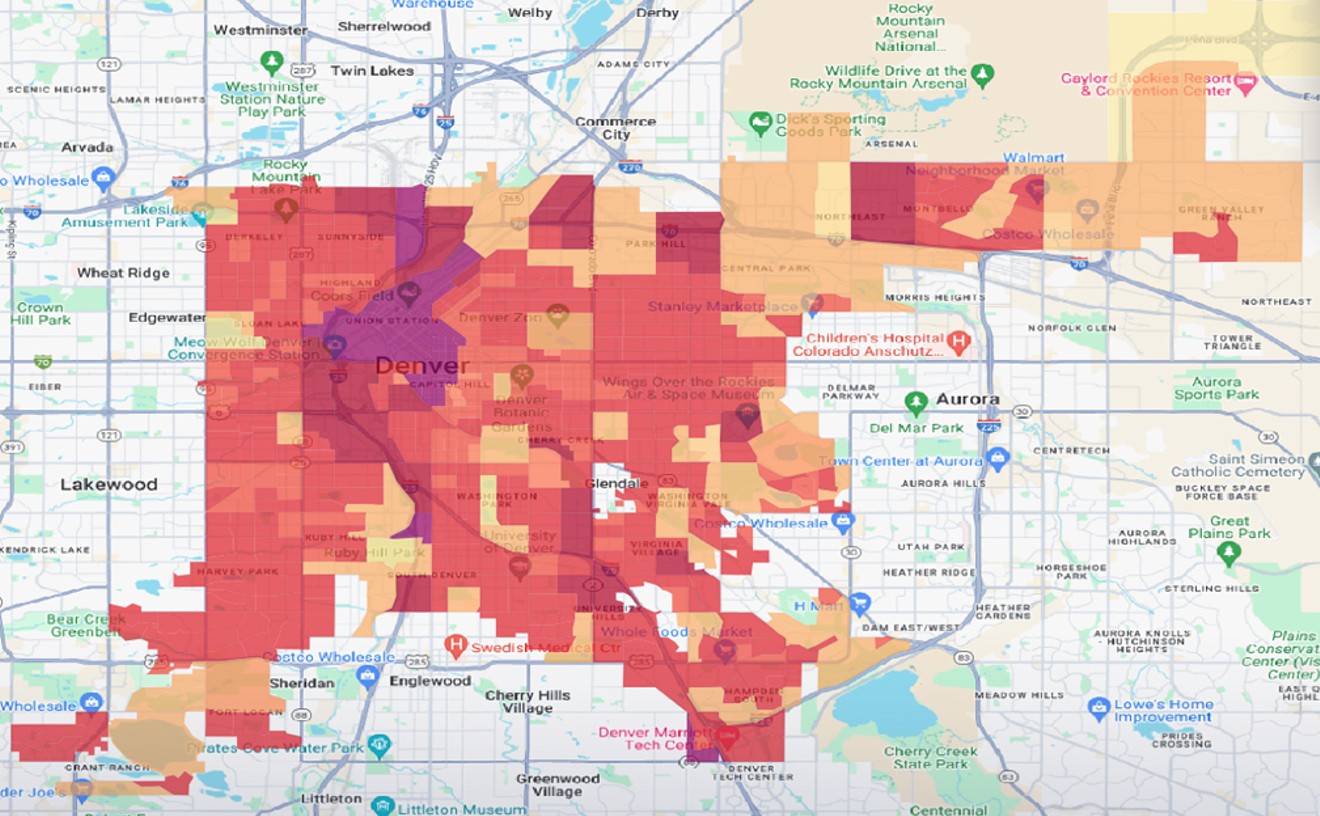On July 9, the commission approved a roof demolition and rebuild for the famous building at 2650 Welton Street, along with an eight-story hotel addition on the back of the property. The addition will change the main entrance on Washington Street while preserving the historic entrances on Welton to allow more room for pedestrians and a new patio space as part of the primary entrance, according to renovation plans.
The Rossonian is one of the most iconic buildings in not just the Five Points neighborhood, but all of Denver. This project is the latest of many efforts since the 1960s to bring new life to what is a landmark of Denver's Black history and jazz scene.
Colorado development company Palisade Partners has owned the building since 2017. The company's renovation design, created with Craine Architecture, includes a 150-seat restaurant with a bar and music lounge. Historic details such as the signs and cornices of the building will also be maintained as part of the reimagined space.
“Our approach has been of its time,” Craine Architecture studio director Brad Gassman told the commission. “It's reflective of the history, but also respectful. It’s a successful unification of the old and new, and it's a fun approach to setting a historic building off and tying it back into the neighborhood.”
A century ago, the Rossonian was one of few hotels in Denver that welcomed Black performers traveling the country, and it was located in the middle of one of the only parts of town where Black residents could buy homes. Back then, Five Points was known as the "Harlem of the West" and reportedly had more Black-owned businesses than any American neighborhood outside of Harlem itself.
The biggest jazz stars at the time, including Duke Ellington, Count Basie, Ella Fitzgerald, Billie Holiday and Louis Armstrong, stayed at the Rossonian during the hotel's heyday.
But in the 1960s, laws were passed to prevent racial discrimination in real estate and end segregation. Black entertainers could stay in other hotels and Black residents could buy homes outside of Five Points, and the Rossonian lost popularity and slipped into disrepair.
Ideas for reviving the space have failed or been stopped in their tracks since the 1980s.
Since the Rossonian was designated a landmark on the National Register of Historic Places in 1995 and Five Points was named Denver's first cultural historic district in 2002, the new design must preserve the original structure and respect standards for construction set by the local cultural district.
In April, Landmark Preservation staff determined that those standards had been met and recommended approval, but needed the commission to sign off, which it did today.
The plan will preserve the Rossonian’s historic facade while demolishing the three buildings next to the Rossonian — also owned by Palisade — to make way for the eight-story hotel addition. Palisade operates the Hooper, a hotel just down the street, and the proposal calls for connecting the Rossonian development with the Hooper for a seamless integration on the block.
Other details include a new outdoor deck on the fourth floor, which is the first story taller than the current Rossonian structure; it will be set back to provide space for the historic building. The brick for the addition will largely be matched to the lighter-toned cream bricks of many of the historic Rossonian’s design elements, plans show.
Approval of the restoration and roof demolition project was smooth sailing, with few commissioner comments and the only notes from the public being favorable opinions from the Five Points Historic Cultural District Design Review Committee and Historic Denver, a nonprofit dedicated to historic preservation.
It's not hard to see that the building needs a little care and attention, according to one of the designers.
“It hasn't been maintained for quite some time,” Gassman said of the need to demolish and restore the roof. “It's also an opportunity for us to use this new roof structure to secure the walls. Some walls on Washington Street are actually moving away from this facade, so this is part of that overall structural remediation.”
The new addition will set windows back inside brick details to maintain historic character; that approval was also fairly straightforward.
Still, Denver’s Landmark Preservation Commission is all about the details, so the main topic of contention was whether the plan needed to be changed to preserve the opaque glass blocks around the door.

Glass blocks around the door were the hot topic at the July 9 Denver Landmark Preservation Commission meeting.
Denver Landmark Preservation
Gassman said the Craine team had discovered older photos showing the glass blocks were not part of the original design, and were likely added on after the period of significance for the building on the National Historic Register, which ends in 1945.
However, the Denver Historic Cultural District designation goes up to 1965, and Bryant shared that glass blocks like these are a common theme in the area, and the commission is tasked with upholding the district’s regulations.
Commission Vice-Chair Erika Warzel said she had concerns with promoting the restoration of the iconic light-up signs above the door and on the side of the building — both of which were also added after the hotel was originally built — while not preserving the glass blocks.
“If we're keeping [the signs] and we're deciding for maybe-not-historic reasons to let the glass block go, maybe that's okay,” she said. “But that’s why I would like to talk on it.”
Most commissioners didn’t have an issue with allowing the glass blocks to be replaced with single-pane transparent glass, as Palisade and Craine proposed and as the original iteration of the building showed.
“Going back to transparency is a good idea, not just from a retail perspective, but from a safety and security perspective,” Commissioner Nick Foussianes added.
Commissioner George Dennis put it more simply: “I just can't get emotional with a glass block."
In the end, the commission voted with a majority to approve the plans, including the removal of the glass blocks. Although the plans are still making their way through the city’s site development plan review and zoning processes, the commission’s decision is a key step toward restoration and construction being able to start.












